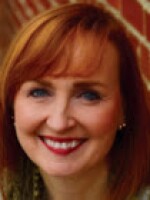“Good morning to you. Good morning to you. We’re all in our places with sun-shining faces. Oh, this is the way to start a new day,” Mozelle Booker sang, recalling a tune from her elementary school days at Dunbar Rosenwald School in Palmyra. "Hidden History with Brian Bullock" features Booker and several others in a recent episode uncovering the history of Virginia’s Rosenwald Schools.
“Before we had the Rosenwald School, people walked long distances to go to these one-room schools. The one-room schools were in very poor condition,” she said.
In the early 20th century, disparities in public education among white children and African American children were stark, especially in the South. Elected white officials passed Jim Crow laws that divided communities along racial lines and created an education system with separate schools for African American and white students.
This separate and unequal system was especially damaging to African American communities in poor, rural areas. White lawmakers allocated what funds they had to build and supply white schools, leaving African American children to learn in small, one-room schools with poor insulation and little to no plumbing or heat.
Julius Rosenwald, an Illinois businessman and philanthropist, took action. In 1912, he partnered with educator and activist Booker T. Washington and the Tuskegee Institute he founded to design and build schools for African American students in the rural South. In 1917, Rosenwald created an independent foundation, the Rosenwald Fund, to provide resources to African American communities that wanted schools.
“I think he saw how the African American community was disenfranchised. So, he wanted to give back,” said Dr. Lisa Winn-Bryan of Preservation Virginia, an organization that works to sustain and preserve Virginia’s historic places.
His initiative was a success. Using grants and architectural designs provided by the Rosenwald Fund, communities built more than 5,000 schools across 15 states and provided state-of-the-art facilities where thousands of children were educated throughout the early- and mid-20th century.
The difference between learning in a one-room schoolhouse and a Rosenwald School was vast.
“They were better built, and you could bring all the kids together in one building. And you had better teachers,” said Booker. “You had people with degrees at that time. … It was a real step up.”
Gail Smith attended Second Union Rosenwald School in Fife from 1953-1959. “Coming to this two-room school — I’ll never forget it. It was the best years of my life,” she said. “Because of what I was taught here and learned here, I moved on up. … Second Union School gave me the initiative to do something, make something.”
The Rosenwald Fund helped create 382 schools and auxiliary education buildings in Virginia between 1917 and 1932. After the U.S. Supreme Court’s 1954 ruling in Brown v. Board of Education struck down segregated education, Virginia joined other Southern states in “massive resistance” to the ruling by shuttering schools to prevent integrated classrooms. However, when the Supreme Court overturned Virginia’s tuition grants based on noncompliance, the Commonwealth was forced to desegregate schools or lose federal funding. With African American students attending formerly all-white schools, Virginia’s Rosenwald Schools fell into disuse and disrepair. Many were torn down.
But about one-third of Virginia’s Rosenwald Schools are still standing. Preservation Virginia has been working to restore the remaining buildings and preserve the history those institutions hold — a history that is important to former students like Smith and Booker.
“We did the Pledge of Allegiance, and we sang ‘O, beautiful for spacious skies.’ We did not realize we were second-class citizens,” she recalled. “We said the Pledge of Allegiance. We were Americans.”
Learn more about the Rosenwald Schools in the latest episode of "Hidden History with Brian Bullock" on the new VPM History YouTubechannel.
Check out the Hidden History website to catch up on past episodes. And stay tuned for more "Hidden History!"








